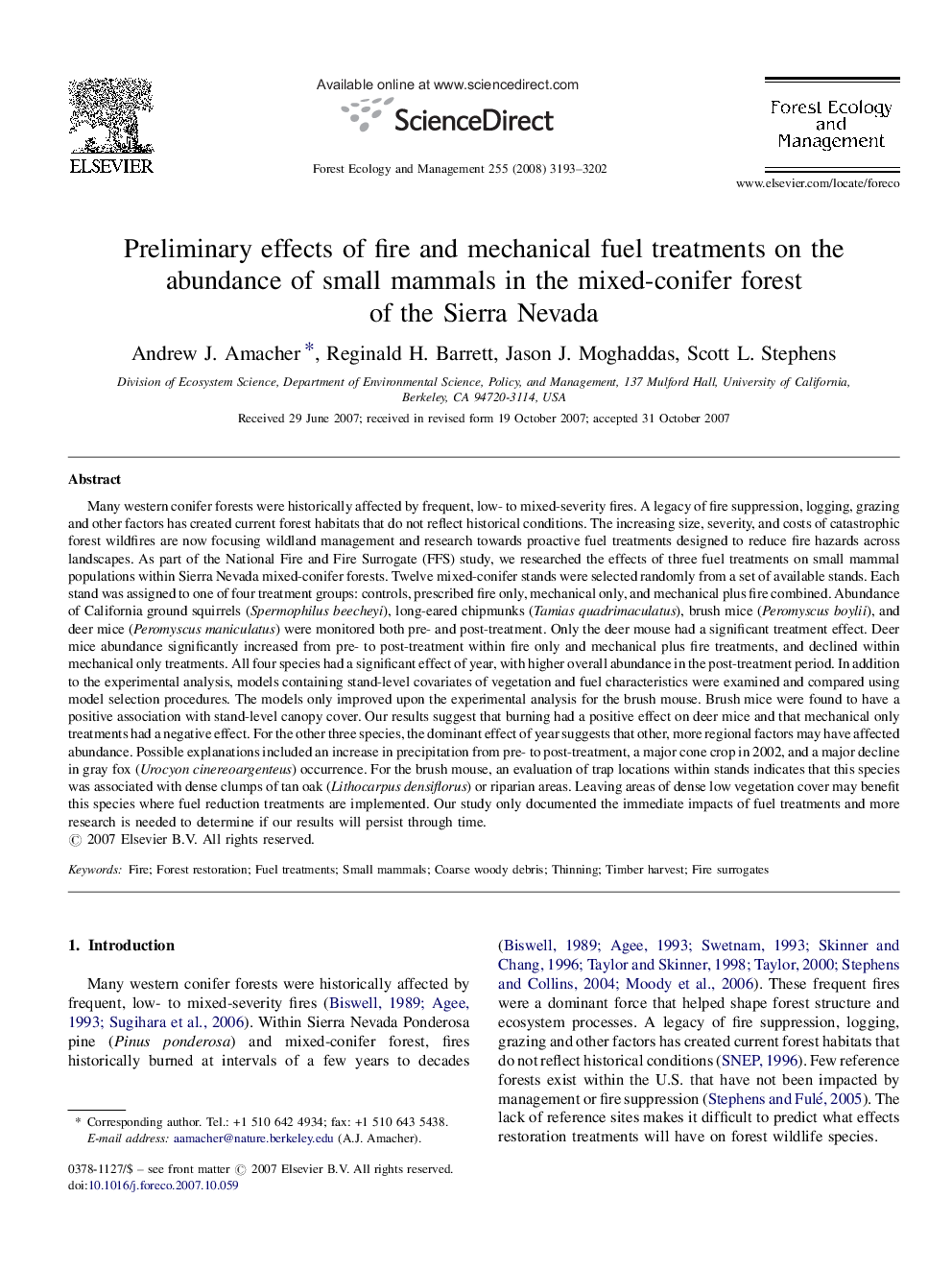| کد مقاله | کد نشریه | سال انتشار | مقاله انگلیسی | نسخه تمام متن |
|---|---|---|---|---|
| 89196 | 159335 | 2008 | 10 صفحه PDF | دانلود رایگان |

Many western conifer forests were historically affected by frequent, low- to mixed-severity fires. A legacy of fire suppression, logging, grazing and other factors has created current forest habitats that do not reflect historical conditions. The increasing size, severity, and costs of catastrophic forest wildfires are now focusing wildland management and research towards proactive fuel treatments designed to reduce fire hazards across landscapes. As part of the National Fire and Fire Surrogate (FFS) study, we researched the effects of three fuel treatments on small mammal populations within Sierra Nevada mixed-conifer forests. Twelve mixed-conifer stands were selected randomly from a set of available stands. Each stand was assigned to one of four treatment groups: controls, prescribed fire only, mechanical only, and mechanical plus fire combined. Abundance of California ground squirrels (Spermophilus beecheyi), long-eared chipmunks (Tamiasquadrimaculatus), brush mice (Peromyscusboylii), and deer mice (Peromyscusmaniculatus) were monitored both pre- and post-treatment. Only the deer mouse had a significant treatment effect. Deer mice abundance significantly increased from pre- to post-treatment within fire only and mechanical plus fire treatments, and declined within mechanical only treatments. All four species had a significant effect of year, with higher overall abundance in the post-treatment period. In addition to the experimental analysis, models containing stand-level covariates of vegetation and fuel characteristics were examined and compared using model selection procedures. The models only improved upon the experimental analysis for the brush mouse. Brush mice were found to have a positive association with stand-level canopy cover. Our results suggest that burning had a positive effect on deer mice and that mechanical only treatments had a negative effect. For the other three species, the dominant effect of year suggests that other, more regional factors may have affected abundance. Possible explanations included an increase in precipitation from pre- to post-treatment, a major cone crop in 2002, and a major decline in gray fox (Urocyon cinereoargenteus) occurrence. For the brush mouse, an evaluation of trap locations within stands indicates that this species was associated with dense clumps of tan oak (Lithocarpusdensiflorus) or riparian areas. Leaving areas of dense low vegetation cover may benefit this species where fuel reduction treatments are implemented. Our study only documented the immediate impacts of fuel treatments and more research is needed to determine if our results will persist through time.
Journal: Forest Ecology and Management - Volume 255, Issues 8–9, 15 May 2008, Pages 3193–3202